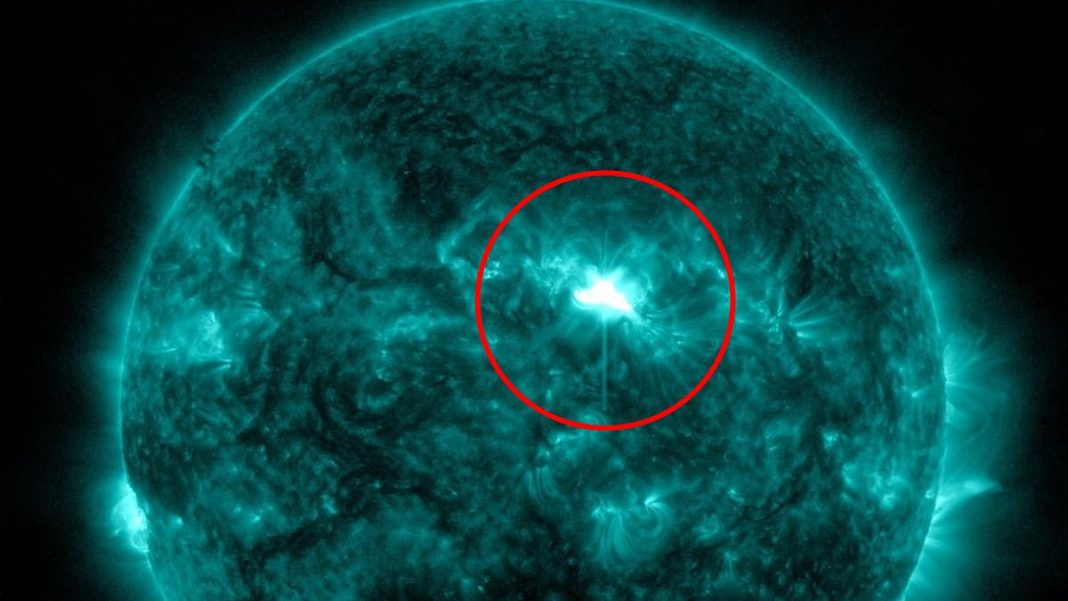10m Americans told to stay indoors TODAY due to dangerous conditions,
More than 10 million Americans across Arizona and Nevada are under an extreme heat warning, as dangerous temperatures climb to life-threatening levels.
The National Weather Service (NWS) issued the alert on Wednesday, extending it through Friday in some regions, with temperatures forecasted to climb as high as 120°F in the hottest areas.
Officials warn that prolonged exposure to such extreme heat significantly increases the risk of heat-related illnesses, especially for vulnerable populations, including young children, the elderly, outdoor workers, and those without access to air conditioning.
‘Drink plenty of fluids, stay in an air-conditioned room, stay out of the sun, and check up on relatives and neighbors,’ the NWS emphasized.
In Phoenix and its surrounding metro areas, temperatures are expected to hit 116°F, while Lake Havasu City, the Las Vegas Valley and parts of the Mojave and Colorado River deserts could see highs up to 115°F.
Grand Canyon National Park, below 4,000 feet, is forecasted to reach 114°F, posing a serious risk to hikers and park visitors, and temperatures in Death Valley will exceed 120°F.
The NWS added that overnight low temperatures may remain unusually warm, offering little to no relief and increasing the likelihood of heat exhaustion and dehydration.
‘Heat-related illnesses increase significantly during extreme heat events,’ the agency noted, urging residents to stay indoors, stay hydrated, and avoid strenuous outdoor activity during peak afternoon hours.
Arizona is no stranger to extreme heat, as the warmest temperature ever recorded was 128°F in Lake Havasu City in 1994.
Tucson is experiencing dry and hot conditions with the hottest temperatures of the year, potentially breaking or nearing daily records.
Grand Canyon Country, the cities of North Rim, Grand Canyon Village and Supai will have ‘dangerously hot conditions.’
‘This warning is reserved for only the hottest days of the year and is issued when temperatures are expected to rise to dangerous levels,’ said the NWS.
The agency warned people living in the Phoenix area face a major heat risk, and ‘overexposure can cause heat cramps and heat exhaustion to develop and, without intervention, can lead to heat stroke.’
Nearly all of northern Nevada is under the warning, which is in effect until midnight.
These regions include Lake Mead National Recreation Area, Lake Havasu and Fort Mohave, Northwest Deserts, Death Valley National Park, Western Mojave Desert, Eastern Mojave Desert, San Bernardino County-Upper Colorado River Valley, Western Clark and Southern Nye County and Las Vegas Valley.
‘Take extra precautions when outside. Wear lightweight and loose-fitting clothing. Try to limit strenuous activities to early morning or evening,’ the NWS said.
‘Take action when you see symptoms of heat exhaustion and heat stroke.’
Health officials have also warned people living in Nevada and Arizona to avoid drinking coffee due to ‘dangerously hot conditions.’
They said it is due to the caffeine, even iced coffee is a diuretic, meaning it tells the body to produce and pass more urine. Energy drinks and soda are also a risk.
Increased urination causes the body to lose fluids, and if those fluids can’t be replaced, the body becomes dehydrated.
Without enough fluids, blood volume in the body diminishes, damaging the kidneys, heart, brain and other vital organs.
The agency also cautioned against eating meals high in protein, as they naturally raise body temperature because the body needs to expend more energy to digest them.
The NWS shared a list of ‘don’ts’ on a graphic, warning: ‘alcohol and caffeine can speed up dehydration.’
Diuretic drinks like these tell the kidneys to release more water and produce more urine, which helps the body get rid of excess fluid.
But in hot temperatures, the body is already losing fluid due to sweating, so diuretics could drain the body of fluids faster than they can be replaced.
In response, blood volume decreases, which means not enough of it can flow to vital organs.
This makes sweating, which cools the body down, less effective and makes the body’s internal temperature increase.
This leads to heat stroke, which causes nausea, vomiting, a rapid pulse, loss of consciousness and organ failure.
The NWS also warned against meals high in protein. Compared to carbohydrates and fats, protein takes more energy to digest into amino acid, meaning the body burns more calories. This generates heat.
Body temperature increases as a result, a process called diet-induced thermogenesis (DIT).
This could explain why eating protein-rich foods might cause ‘meat sweats.’
Instead of drinking coffee, NWS encouraged people in hot areas to ‘drink plenty of water or sports drinks.
Health authorities also suggest skipping steak and chicken and instead opting for foods with high water content like watermelon, berries, melons and cucumbers.






